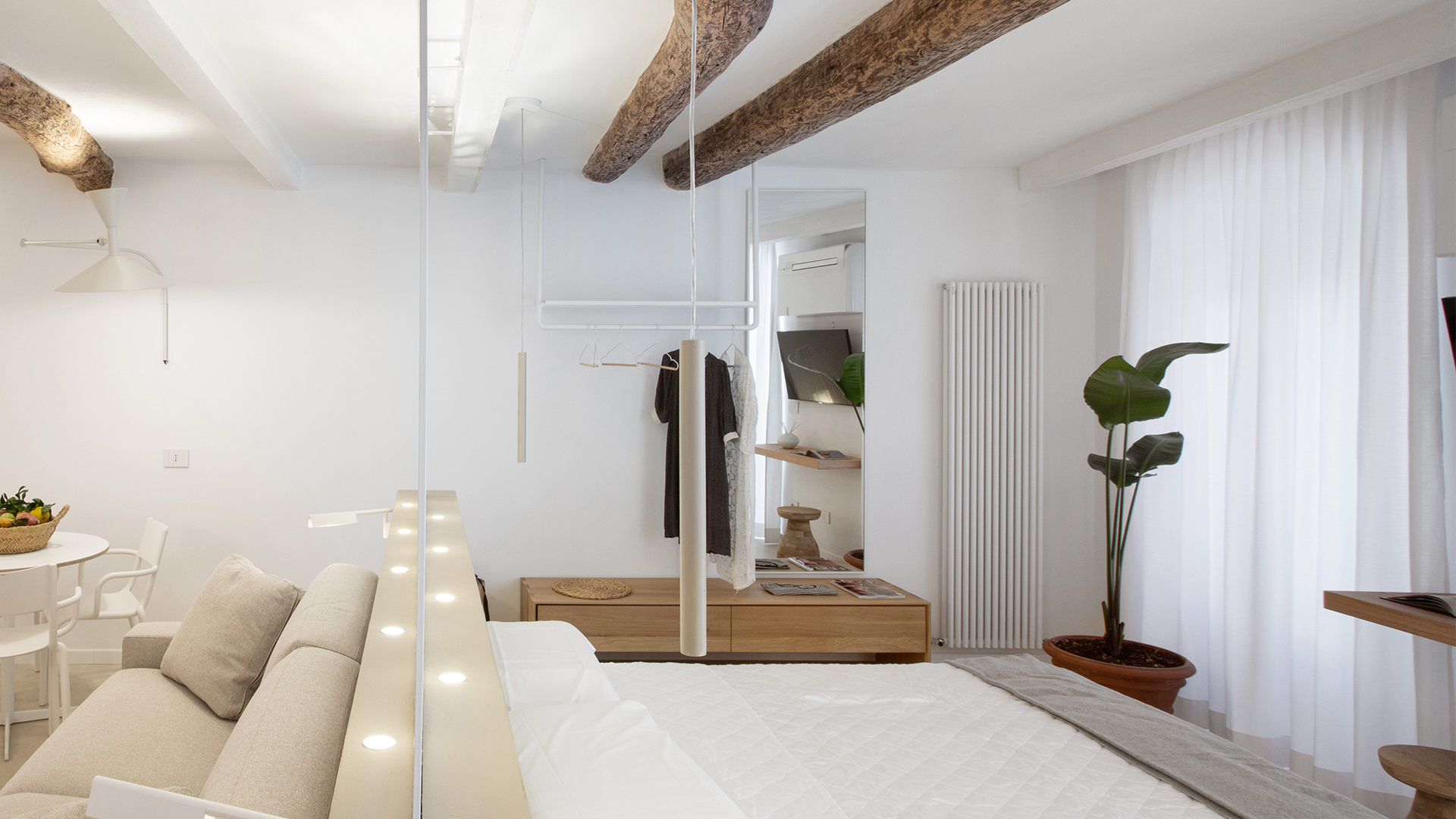
Designing lighting for exposed wooden beams poses a fascinating challenge rich in creative potential. Those who own a ceiling with exposed beams know well that these architectural elements add a touch of warmth and character to interiors, and illuminating them correctly can further enhance their beauty. In this article, we will explore key factors to consider when choosing lighting for exposed beams and examine various types of designer lamps suitable for this purpose.
Factors to be considered in designing lighting points
Exposed beams are a timeless architectural element that can be found not only in attics or lofts but also in homes or apartments with cathedral ceilings, vaulted ceilings, or sloping roofs, such as those in famous mountain houses. Before proceeding with lighting design, it's essential to consider some factors:
1. Wood color and type: before selecting lamps, it is crucial to evaluate the color and type of wood beams. Darker woods may require brighter light sources, while lighter woods could benefit from softer light to avoid excessive contrast.
2. Space dimensions: the size of the space influences the choice of lamps. In larger environments, it may be necessary to combine various light sources to ensure even distribution and complete illumination of the beams.
3. Architectural style: respecting the overall architectural style of the environment is crucial. Lamps should seamlessly integrate with the surrounding design, creating a cohesive aesthetic.
4. Beam orientation: considering the orientation of the beams is crucial. Pendant lamps may be ideal for horizontally arranged beams, while spotlights or wall-mounted lights can highlight vertical beams.
Three lighting ideas to highlight a ceiling with exposed beams
Exposed beams evoke a rustic and welcoming atmosphere, creating a sense of warmth and connection with nature. This style is particularly appreciated in country-type settings, cottages, or contexts where a traditional feel is desired. Lighting plays a fundamental role, making the right choice of light fixtures indispensable. Here are some suggestions.
Pendant lighting for exposed beam ceilings
Pendant lights are an elegant and versatile option for illuminating exposed wooden beams. Suspended from the ceiling, these lamps can be strategically positioned to create focused illumination on specific areas or beams. A distinctive feature of pendant lights is the wide range of shapes and designs available.
From classic shapes like spheres or cylinders to bolder and more artistic designs, pendant lights allow for creative customization, adapting to the specific aesthetic preferences of each project. The flexibility in suspension heights offers additional design possibilities. They can be placed at different heights to create a layered effect or to highlight specific areas of the environment.
Recessed and wall-mounted spotlights for beam effects
Recessed and wall-mounted spotlights offer discreet and modern solutions for illuminating exposed beams. Carefully positioned, recessed spotlights can highlight specific beams, while wall-mounted spotlights can contribute to creating interesting light effects along the walls. These options are ideal for those seeking a minimalist and contemporary approach, seamlessly integrating lighting with the surrounding architecture. This type of lighting is well-suited for highlighting vertical beams or distinctive walls, adding depth to spaces and enhancing the wood's style and color.
LED profiles for customized and atmospheric lighting
LED profiles represent an innovative and highly customizable option for stylishly illuminating exposed wooden beams. These thin light strips offer uniform distribution and can be integrated directly into the beams or along their edges, creating a stunning luminous effect. One distinctive feature of LED strips is the ability to adjust the color temperature, allowing precise control over the atmosphere of the environment.
Thanks to their variable length, it is also possible to segment the exposed beams, creating intriguing light plays and highlighting specific parts of the internal architecture. This ability to divide the lighting allows for designing a unique environment and adapting the light to various activities in the space.
Designing lighting for a house with a wooden beam ceiling may pose some challenges. For example, due to the often irregular arrangement of beams, unwanted shadows may form. Additionally, the color of the wood can influence the color rendering of the light fixture, altering the overall atmosphere of the surrounding environment.
To address these challenges, it is advisable to consult a lighting professional and request accurate lighting calculations. 9010 can assist you in choosing the most suitable LED lighting solutions to transform wooden beams into a key element of your home, creating a cozy and unique atmosphere.